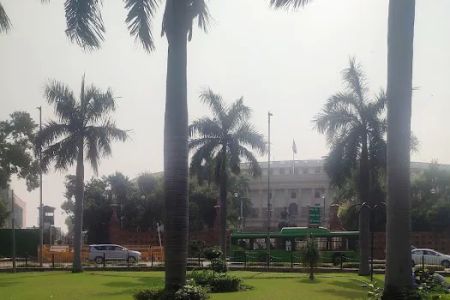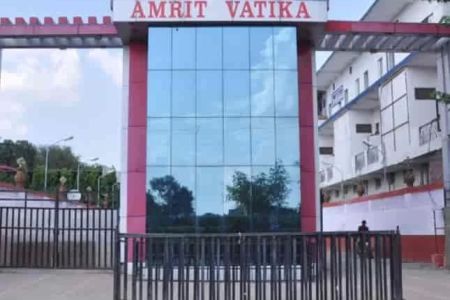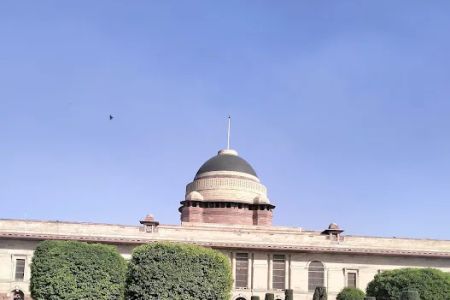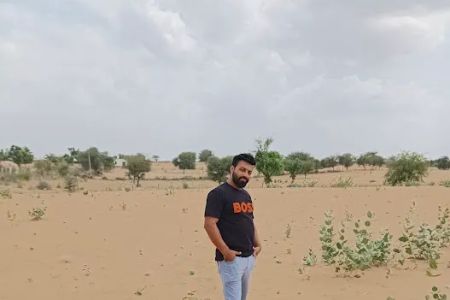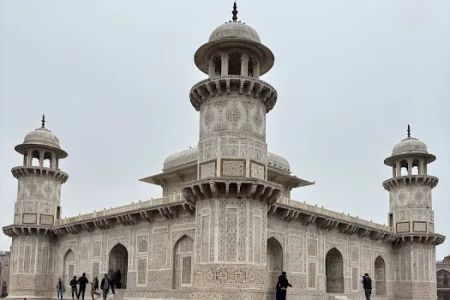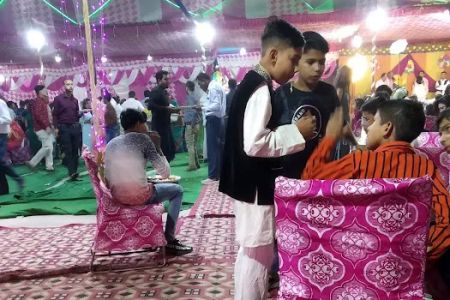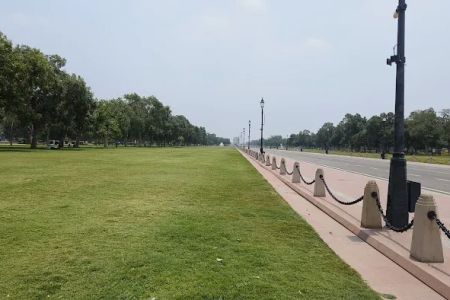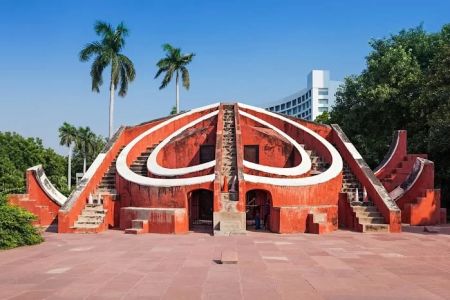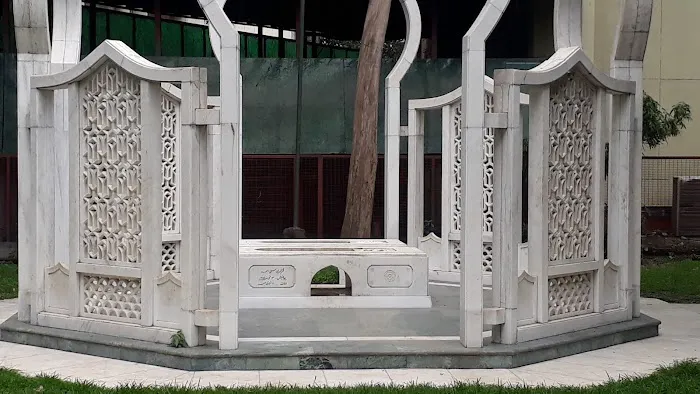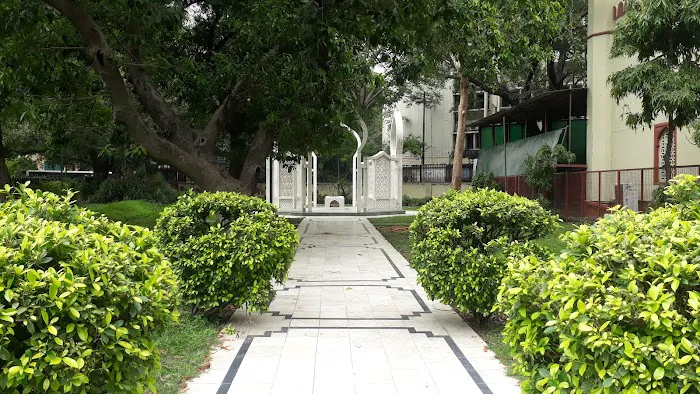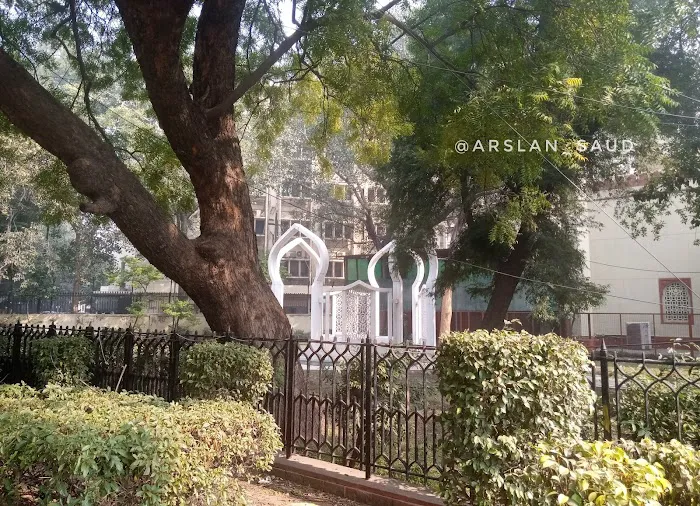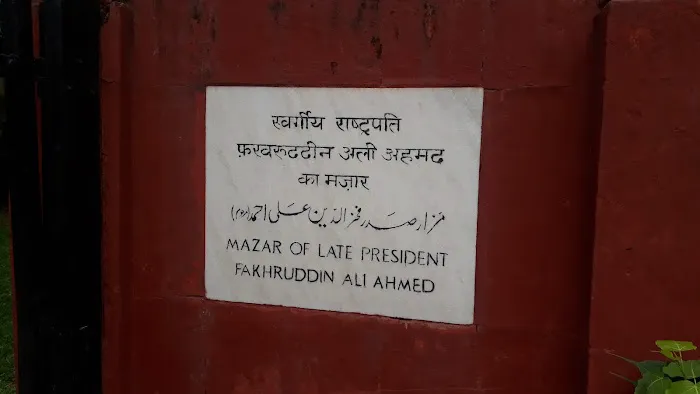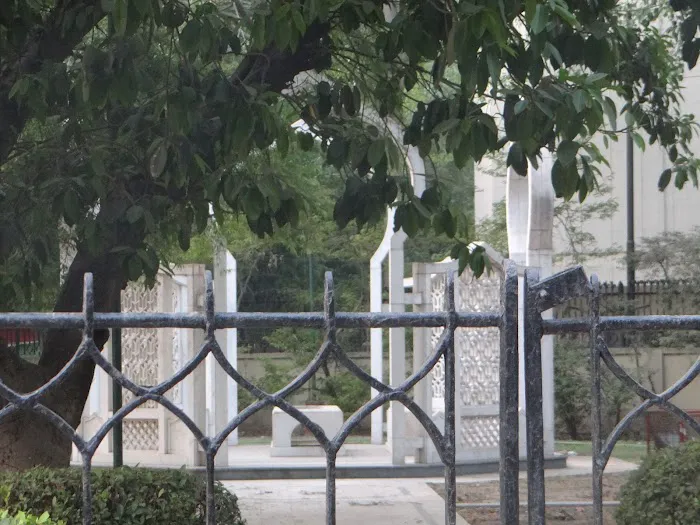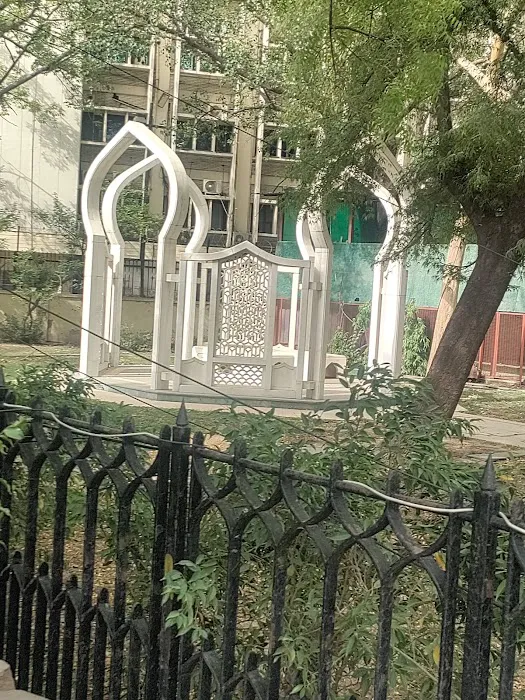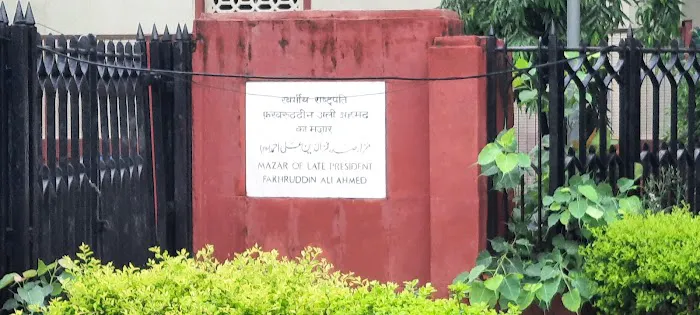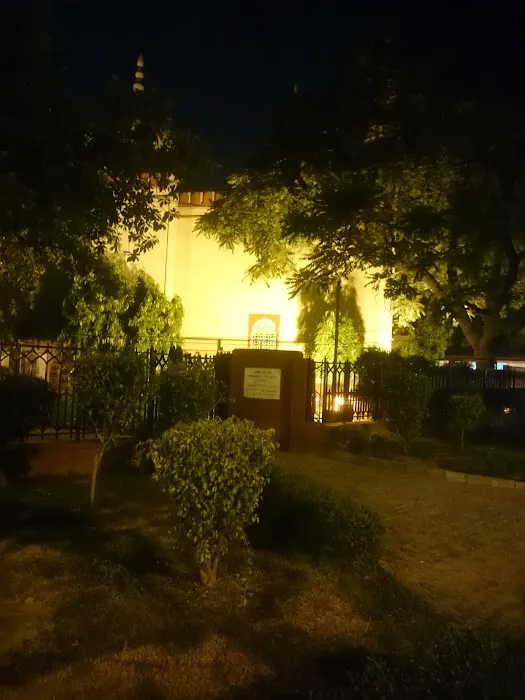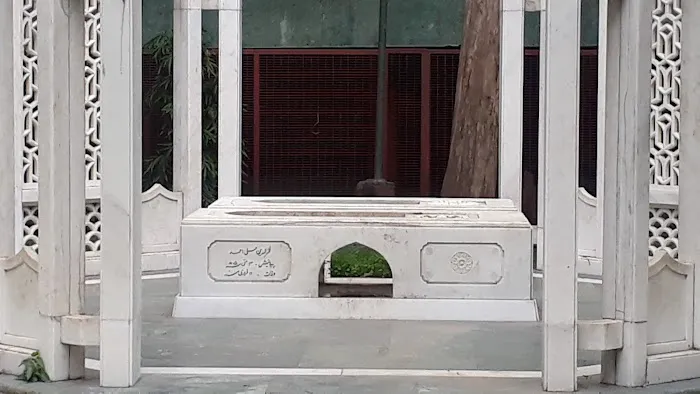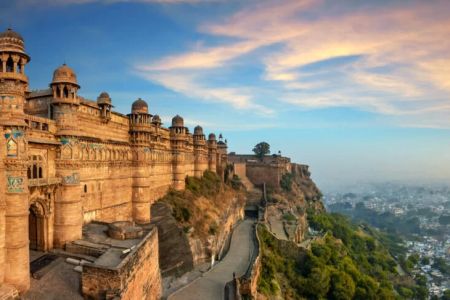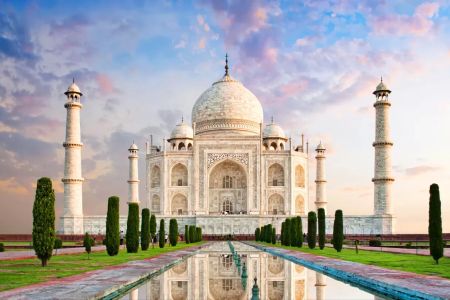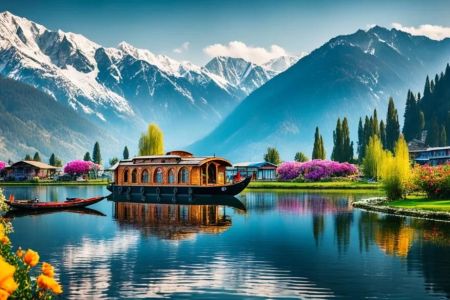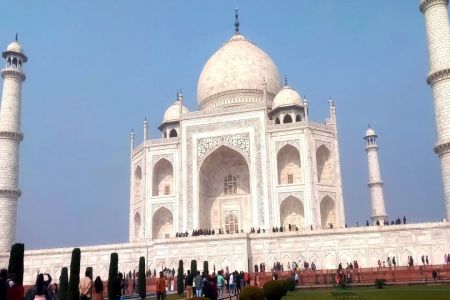Delhi, a city brimming with history, power, and architectural grandeur, offers its residents numerous opportunities to connect with the nation's past. Among these significant landmarks is the Fakhruddin Ali Ahmed Memorial. While not a "park" in the conventional sense of a recreational green space, this memorial is a historically rich site that offers a tranquil and reflective experience, serving as a solemn tribute to India's fifth President. For locals, it represents a unique blend of quiet contemplation and national remembrance, nestled right in the heart of the capital.
Visitors describe the site as the "mausoleum of Fakhruddin Ali Ahmed, the fifth President of India," who was a "minister before becoming the President" and "died while in office." This context immediately highlights its historical significance. Its location is quite distinctive: "You will see this tomb on the left side of the Parliament and on the back side of the mosque." The experience of entering the memorial is often described as creating a "strange, almost surreal feeling," prompting reflection on life and death, and appreciating the "magnificent" nature of such tributes. This peaceful atmosphere, combined with its profound historical weight, makes the Fakhruddin Ali Ahmed Memorial a contemplative destination for those seeking to connect with India's past and pay respects to a former leader. This article will provide a detailed and factual overview of this significant memorial, detailing its location, what it offers, its key features, and why it is a suitable and meaningful place for Delhi locals to visit.
Location and Accessibility
The Fakhruddin Ali Ahmed Memorial boasts a highly prominent and central location in New Delhi, making it easily accessible and identifiable within the city's political and historical landscape. Its precise address is: Sansad Marg Road, J695+GXR, Sansad Chowk, Gokul Nagar, Pandit Pant Marg Area, Central Secretariat, New Delhi, Delhi 110001, India. This places it directly on Sansad Marg (Parliament Street), a major thoroughfare, and within the Pandit Pant Marg Area, renowned for its proximity to key government buildings.
Its accessibility is a significant advantage for Delhi residents. The memorial is remarkably close to a major public transportation hub: "the Central Secretariat Metro Station is at a distance of 100 meters from Gate No. 1." This makes it incredibly convenient for anyone using Delhi's extensive metro network, as it's practically a stone's throw away from one of the city's most central and well-connected stations. In addition to the metro, Sansad Marg is well-served by numerous Delhi Transport Corporation (DTC) bus routes, with bus stops within comfortable walking distance. For those approaching by foot, as one review notes, "If you walk towards Sansad Marg (or Parliament Street) from Red Cross road, using the Sansad Chowk roundabout, you will find a small gate leading to what appears to be a small garden on your right." This clear guidance further enhances its accessibility. Its location "on the left side of the Parliament and on the back side of the mosque" also serves as an excellent directional landmark, making it very easy for locals to find this historically significant site.
Services Offered
The Fakhruddin Ali Ahmed Memorial, primarily a mausoleum and a site of historical significance, offers a unique set of "services" that cater to reflection, education, and remembrance, rather than typical park amenities. Here’s what the site implicitly provides:
Historical and Educational Insight: The memorial offers visitors an opportunity to learn about Fakhruddin Ali Ahmed, India's fifth President, and his life. It provides a tangible link to a significant period in Indian political history, serving as an educational resource about a former head of state.
Space for Solemn Reflection: The inherent nature of a mausoleum provides a "serene feeling" and "strange, almost surreal feeling," as described by visitors. This creates an atmosphere conducive to quiet contemplation, respect, and remembrance of a national figure. It's a place for quiet introspection away from the city's hustle.
Architectural and Design Appreciation: While detailed architectural descriptions aren't provided, mausoleums are often designed with specific architectural styles and aesthetic elements. Visitors can appreciate the design and layout of the memorial, which often incorporates elements of the period or the individual's legacy.
Access to a Peaceful Environment: Despite its central location near the bustling Parliament area, the memorial appears to offer a relatively peaceful environment. This "small garden" feel allows visitors to experience a moment of calm and tranquility.
Proximity to Other Key Landmarks: The memorial's location near Parliament House and other significant government buildings allows visitors to easily combine a visit to the memorial with other explorations of Delhi's central administrative and historical core, offering a comprehensive experience.
Features / Highlights
The Fakhruddin Ali Ahmed Memorial is distinguished by several unique features and highlights that make it a compelling visit for Delhi locals interested in history and quiet reflection:
Mausoleum of a Former President: Its primary and most significant feature is that it is the "mausoleum of Fakhruddin Ali Ahmed, the fifth President of India." This makes it a site of national importance, offering a direct link to the country's political history and an opportunity to pay respects to a former head of state.
Serene and Contemplative Atmosphere: Despite its location in a high-security, busy area, the memorial offers a uniquely peaceful and "surreal feeling." This tranquil ambiance encourages quiet reflection and introspection, providing a stark contrast to the surrounding urban environment.
Strategic Location near Parliament: Being situated "on the left side of the Parliament" and easily accessible via "Sansad Marg (or Parliament Street)" is a major highlight. This prime location makes it convenient for locals to visit alongside other iconic landmarks in Central Delhi, enhancing its accessibility and appeal.
Historical Significance: The fact that Fakhruddin Ali Ahmed "died while in office" and was the "second President who could not complete his term" adds to the historical weight and uniqueness of the memorial, making it a site of interest for those keen on Indian political history.
Easy Metro Accessibility: Its proximity to "Central Secretariat Metro Station... at a distance of 100 meters from Gate No. 1" is an exceptional feature. This makes the memorial one of the most easily reachable historical sites via Delhi's efficient metro system, facilitating visits for all residents.
Subtle and Respectful Design: The description of a "small gate leading to what appears to be a small garden" hints at a modest yet dignified approach to the memorial's design, fitting for a place of solemn remembrance.
Promotions or Special Offers
As a memorial and a site of national historical significance, the Fakhruddin Ali Ahmed Memorial does not engage in commercial promotions, discounts, or special offers in the manner of a business. Its primary purpose is to serve as a public tribute and historical landmark, accessible to all.
However, the "special offers" of the Fakhruddin Ali Ahmed Memorial are inherent in its public nature and the value it provides:
Free Public Access: The most significant "offer" is complimentary entry for all visitors. This allows anyone, regardless of economic background, to visit, reflect, and learn about a piece of India's presidential history without any cost.
Complimentary Educational Experience: Visitors gain insights into the life and legacy of a former President, offering a free educational experience about a significant figure in Indian politics and history.
Free Access to a Peaceful Retreat: It provides a rare, free opportunity for quiet contemplation and reflection in a serene environment, especially valuable in the bustling heart of Delhi.
While the memorial itself does not offer promotions, any related public events, such as memorial services on significant anniversaries or guided tours (if ever organised by official bodies), would typically be communicated through government information channels, national news, or official cultural event listings. Interested individuals should refer to such official sources for information on any public ceremonies or educational initiatives.
Contact Information
As a national memorial and a public historical site, the Fakhruddin Ali Ahmed Memorial does not operate with a commercial contact number or a dedicated customer service department like a private business. Such sites are typically managed by government bodies responsible for historical monuments or national memorials.
Address: Sansad Marg Road, J695+GXR, Sansad Chowk, Gokul Nagar, Pandit Pant Marg Area, Central Secretariat, New Delhi, Delhi 110001, India
Phone: For administrative inquiries, maintenance issues, or for information regarding official ceremonies or events, individuals would typically need to contact the relevant government department, such as the Ministry of Urban Development (which often oversees public land and memorials) or the Archaeological Survey of India (ASI) if it falls under their purview for historical preservation. Specific contact details for these government bodies are usually available on their official websites. Direct phone lines for the memorial itself are generally not maintained for public inquiries.
The memorial is typically accessible during standard daylight hours, often aligning with the operational timings of other public monuments in Central Delhi. It's always advisable to check local conditions or official government websites for any specific timings or security protocols, especially given its proximity to high-security areas like the Parliament.
Conclusion: Why Fakhruddin Ali Ahmed Memorial is Suitable for Locals
For the residents of Delhi, the Fakhruddin Ali Ahmed Memorial offers a unique and profound experience that goes beyond a typical recreational park. While it doesn't provide playgrounds or extensive walking tracks, its suitability for locals lies in its profound historical significance and its capacity to offer a serene escape right in the vibrant heart of the capital. It's a place where one can connect directly with India's past, particularly with the legacy of a former President, fostering a sense of national pride and historical awareness.
The "strange, almost surreal feeling" described by visitors highlights its capacity to evoke deep thought and introspection, a rare commodity in Delhi's fast-paced urban life. Its strategic location "on the left side of the Parliament" and its remarkable accessibility, being just "100 meters from Gate No. 1" of the Central Secretariat Metro Station, make it incredibly convenient for locals to visit. This ease of access encourages more frequent visits, allowing residents to integrate a moment of historical reflection into their daily routines or weekend explorations.
Moreover, for those with a historical bent, the memorial offers a tangible link to events like the "1974 election" and the knowledge that he was the "second President who could not complete his term." This factual depth provides a rich context for understanding India's democratic journey. In essence, the Fakhruddin Ali Ahmed Memorial is an invaluable site for Delhiites seeking a quiet, respectful, and educational encounter with national history, all within the bustling confines of their city. It serves as a reminder of the nation's past leaders and provides a tranquil space for contemplation amidst the urban dynamism.
